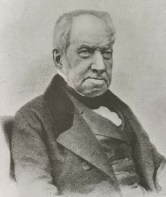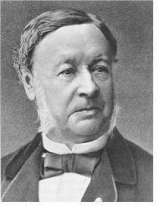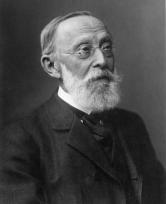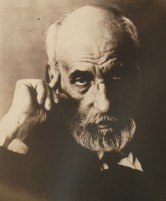Cell theory refers to the idea as cells are the basic unit of structure in every living thing. Development of this theory during the mid 17th century was made possible by advances in microscopy. This theory is one of the foundations of biology. The theory says that new cells are formed from other existing cells, and that the cell is a fundamental unit of structure, function and organization in all living organisms.
HISTORY
 The cell was discovered by Robert Hooke in 1665. He examined (under a coarse, compound microscope) very thin slices of cork and saw a multitude of tiny pores that he remarked looked like the walled compartments a monk would live in. Because of this association, Hooke called them cells, the name they still bear. However, Hooke did not know their real structure or function. Hooke’s description of these cells (which were actually non-living cell walls) was published in Micrographia. His cell observations gave no indication of the nucleus and other organelles found in most living cells.
The cell was discovered by Robert Hooke in 1665. He examined (under a coarse, compound microscope) very thin slices of cork and saw a multitude of tiny pores that he remarked looked like the walled compartments a monk would live in. Because of this association, Hooke called them cells, the name they still bear. However, Hooke did not know their real structure or function. Hooke’s description of these cells (which were actually non-living cell walls) was published in Micrographia. His cell observations gave no indication of the nucleus and other organelles found in most living cells.
The first person to make a compound microscope was Zacharias Jansen, while the first to witness a live cell under a microscope was Antonie van Leeuwenhoek, who in 1674 described the algae Spirogyra and named the moving organisms animalcules, meaning “little animals”.
 It was probably the first person to observe bacteria and other microorganisms. In an extensive list of seventeen pages, dated 9 October 1676, describes what we now call protozoaris, especially ciliates that feed on algae (Euglena and Volvox).
It was probably the first person to observe bacteria and other microorganisms. In an extensive list of seventeen pages, dated 9 October 1676, describes what we now call protozoaris, especially ciliates that feed on algae (Euglena and Volvox).
 Describes numerous agencies to determine more or less possible at present:: Vorticella campanula, Oicomonas thermos, Oxytricha sp., Stylonychia sp. Enchelys, Vaginicola, Coleps. In 1677 the sperm is first mentioned in a letter to the Royal Society, which discusses numerous animalcules in the semen.
Describes numerous agencies to determine more or less possible at present:: Vorticella campanula, Oicomonas thermos, Oxytricha sp., Stylonychia sp. Enchelys, Vaginicola, Coleps. In 1677 the sperm is first mentioned in a letter to the Royal Society, which discusses numerous animalcules in the semen.
Later, and by the development of microscopes in the first half of the nineteenth century, the Scottish botanist Robert Brown observed the constant presence of a body inside the plant cells, called nucleus, and stressed the importance of a basic cell structure.
 Two German scientists, Theodor Schwann, hystiologist and physiologist, and Jakob Schleiden, botanist, became aware of certain fundamental community in the microscopic structure of animals and plants, in particular the presence of nuclei, the British botanist Robert Brown had described Recently (1827).
Two German scientists, Theodor Schwann, hystiologist and physiologist, and Jakob Schleiden, botanist, became aware of certain fundamental community in the microscopic structure of animals and plants, in particular the presence of nuclei, the British botanist Robert Brown had described Recently (1827).
Research published work together on the microscopic structure and matching the growth of plants and animals (Mikroskopische Untersuchungen über die in der Übereinstimmung Struktur und der Tiere und dem Wachstum Pflanzen, Berlin, 1839).
Settled the first principle of the cell theory history: Everything in the living cell is composed of products or secreted by cells.
 Rudolf Ludwig Karl Virchow (1821 – 1902) was the German physician considered one of the most prominent pathologists of the nineteenth century. He pioneered the modern concept of the pathological process in the present cell theory, which explained the effects of disease in organs and tissues of the body, emphasizing that the disease does not arise in the organs or tissues in general, but primary form in individual cells. With which he coined the term “Omnis and cellular cellula” (“every cell is derived from another cell [existing]”).
Rudolf Ludwig Karl Virchow (1821 – 1902) was the German physician considered one of the most prominent pathologists of the nineteenth century. He pioneered the modern concept of the pathological process in the present cell theory, which explained the effects of disease in organs and tissues of the body, emphasizing that the disease does not arise in the organs or tissues in general, but primary form in individual cells. With which he coined the term “Omnis and cellular cellula” (“every cell is derived from another cell [existing]”).
He was nominated for the 1902 Nobel Prize for Medicine and Physiology, by the Spanish Santiago Ramon y Cajal, the latter being the winner. It was also the winner of the Copley Medal in 1892.
The cell theory was debated throughout the nineteenth century, but it was Louis Pasteur, who, with his experiments on the multiplication of unicellular microorganisms, discarding the theory of spontaneous generation in 1859, gave rise acceptance resounding and definitive.
 A few years later, Santiago Ramon y Cajal, doctor, university professor and hystiologist Spain awarded the Nobel Prize in Physiology or Medicine in 1906, discovered, in 1888, during his stay in Barcelona, using the staining method of Camillo Golgi the mechanisms that govern the morphology and processes of the connective nerve cells of the gray matter and cerebrospinal nervous system. His theory was accepted in 1889, during the Congress of the German Anatomical Society, held in Berlin. Its structural scheme of the nervous system as a conglomerate of independent units defined and became known as “neuron doctrine” and it stands the law of dynamic polarization model can explain the unidirectional transmission of ‘nerve impulse. In 1906 he was awarded, along with the Italian Camillo Golgi, the Nobel Prize in Physiology or Medicine “for his studies on the nervous system.”
A few years later, Santiago Ramon y Cajal, doctor, university professor and hystiologist Spain awarded the Nobel Prize in Physiology or Medicine in 1906, discovered, in 1888, during his stay in Barcelona, using the staining method of Camillo Golgi the mechanisms that govern the morphology and processes of the connective nerve cells of the gray matter and cerebrospinal nervous system. His theory was accepted in 1889, during the Congress of the German Anatomical Society, held in Berlin. Its structural scheme of the nervous system as a conglomerate of independent units defined and became known as “neuron doctrine” and it stands the law of dynamic polarization model can explain the unidirectional transmission of ‘nerve impulse. In 1906 he was awarded, along with the Italian Camillo Golgi, the Nobel Prize in Physiology or Medicine “for his studies on the nervous system.”
The discovery of the individuality of the neuron gave the cell theory a universal validity.
Therefore, we can summarize the principles of cell theory as:
1) Even in human beings is composed of cells or their secretory products. The cell is the anatomical unit of living matter, and a cell may be sufficient to constitute an organism.
2) All cells come from preexisting cells by division of these (Omnis cellula and Cellular).
3) The vital functions of organisms occur within cells, or in their immediate environment, controlled substances they secrete. Each cell is an open system that exchanges matter and energy with their environment. In a cell fit all vital functions, so that a cell is sufficient to have a living (which is a living unicellular). Thus, the cell is the physiological unit of life.
4) Each cell contained all the hereditary information necessary for control of their cycle and the development and operation of an institution of its kind, and to transmit this information to the next generation of cells. So the cell is also the genetic unity.
ACTIVITY.
Search for information on the Internet and try to make a timeline of the cell theory from the seventeenth century to the fifties.
EXAMPLE:


it is good about cell theories
I want to know the importance of cell theory in general